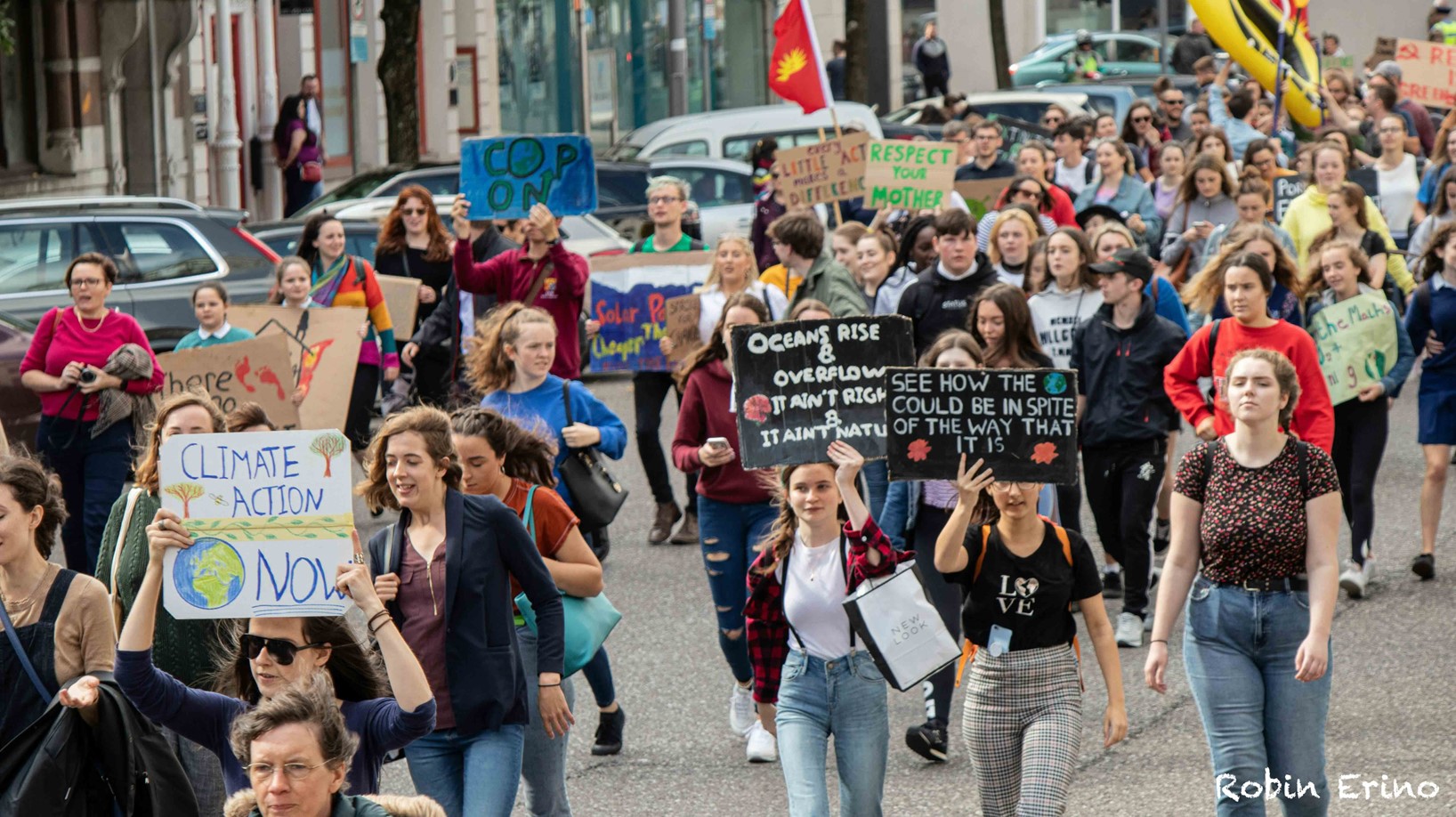Teresa Shook, in an interview with Perry Stein, a journalist with the Washington Post, shared her surprise that her post on a Facebook page led to the largest single protest in history. “I wasn’t that political,” she told Stein. “Something happened in me with this administration that woke up my love for people and humanity and what this country stands for.”
Millions of women in cities across the U.S. gathered in a show of solidarity in response to the inauguration of our former president. Their collective voices raised awareness of a few of the issues facing women in a country dominated by male voices. And their impact shows in the political tactics seen in this year’s presidential election.
The Woman’s March on Washington is an example of a non-violent protest. Which, based on research published by Harvard Professor of Public Policy, Erica Chenoweth, has the potential to impact future policy.
In an interview with Michelle Nicholasen published in the Harvard Gazette, Chenoweth noted that the size of the Women’s March meets the threshold of participation that is needed to make an impact. In this case, around 11.9 Million participants. Nicholasen and her colleague, Maria J. Stephan, made a discovery in their research that a relatively small group, approximately 3.5%, can make a difference.
The researchers discovered civil resistance campaigns lead to longer-term reforms and changes than violent campaigns. During her interview, Nicholasen shared, “Countries in which there were nonviolent campaigns were about 10 times likelier to transition to democracy within a five-year period compared to countries in which there were violent campaigns whether the campaigns succeeded or failed.”
Of course, the success of Gandhi’s non-violent campaign that led to India’s independence from Great Britain is among the most notable examples. It’s interesting that Gandhi’s Satyagraha philosophy of non-violence and non-resistance was inspired, in part, by Jesus’ Sermon on the Mount.
The Rev Dr Martin Luther King, Jr., was a student of both Gandhi and Jesus. And in his book, Stride Toward Freedom, King describes how the Montgomery Bus Boycott achieved bus desegregation through non-violent protest.
During His sermon, Jesus took on the traditional logic that responding to an offense calls for a proportionate offense. An “eye for an eye, tooth for a tooth.” While this approach satisfies our human need for retribution, it also promotes the idea the response to violence is more violence.
But Jesus says, instead, “Do not take revenge on someone who wrongs you!” And describes four situations those listening recognized.
Do not take revenge on someone who wrongs you.
Matthew 5:39
We’re unlikely to have an occupying force soldier insist we carry their pack. But most of us can identify with someone striking us, even if we’ve never experienced it. I’ve never been sued, but I’ve loaned out a lot of things and gotten some of them back.
I won’t take us through every example. Jesus offers a diverse sampling of situations that expect responses should they arise. And Jesus tells us to “go the extra mile” to appease the other party. But how is this non-violent protest?
According to first century Roman law, a soldier could ask any resident to carry their pack for them. However, the distance was limited to one mile. Jesus tells the crowd to carry their pack for two miles, which puts the soldier in violation of law, even though it wasn’t their intent. Would the soldier choose this same resident next time?
What if the next person did the same thing? And another. It’s likely the soldier would choose to carry their own pack rather than risk dealing with another over zealous carrier. You can see where this is going.
Jesus offered similar, but more challenging, alternatives for a slap on the cheek, someone suing you and loaning items.
One understandable action is the possibility of allowing a pattern of abuse to continue. I don’t believe this was Jesus’ intent. Rather than allowing an unconscious response, on our part, to move a confrontation towards escalation, try a conscious response based on showing love for the other person.
You can join us each Sunday in person or online by clicking the button on our website’s homepage – Click here to watch. This button takes you to our YouTube channel. You can find more information about us on our website at FlintAsburyChurch.org.
A reminder that we publish this newsletter that we call the Circuit Rider each week. You can request this publication by email. Send a request to FlintAsburyUMC@gmail.com or let us know when you send a message through our website. We post an archive of past editions on our website under the tab, Connect – choose Newsletters.
Pastor Tommy
Parts of our series was inspired by Fr. Richard Rohr. Jesus’ Alternative Plan. Cincinnati: Franciscan Media, 2022.
Perry Stein. “The woman who started the Women’s March with a Facebook post reflects: ‘It was mind-boggling’.” © Washington Post, January 31, 2017. Retrieved from: link
Michelle Nicholasen. “Nonviolent resistance proves potent weapon.” © Weatherhead Center for International Affairs, February 4, 2019. Retrieved from: link
“Stride Toward Freedom: The Montgomery Story.” © The Martin Luther King, Jr. Research and Education Institute, Stanford University, September 17, 1958. Retrieved from: link

